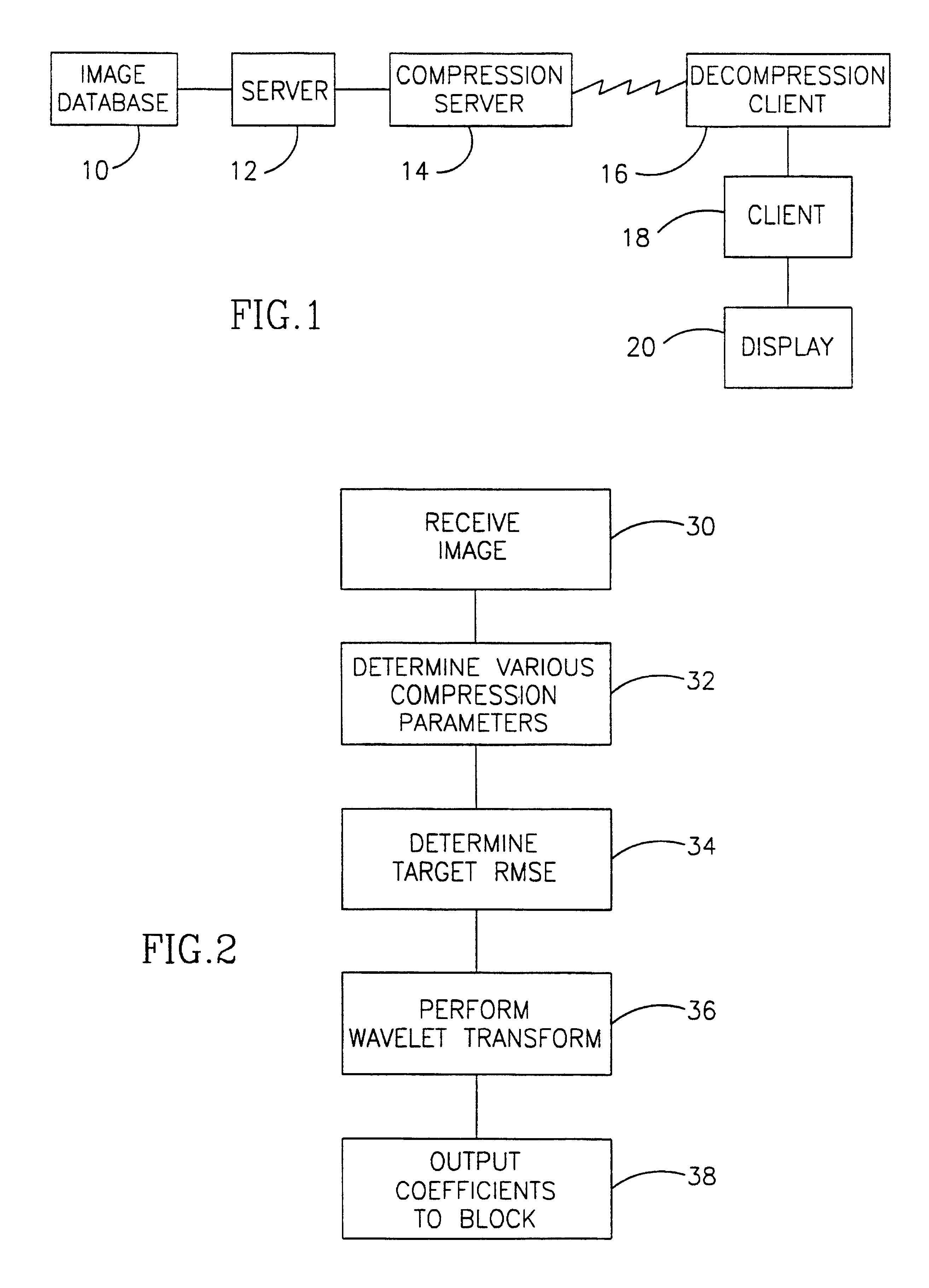Diagnosis oriented lossy compression of medical images
a lossy compression and medical image technology, applied in the field of teleradiology, can solve the problems of reducing or even negating the diagnostic quality of images, and it is difficult to transmit such diagnostic quality images, and achieve the effect of reducing memory requirements at the clien
- Summary
- Abstract
- Description
- Claims
- Application Information
AI Technical Summary
Benefits of technology
Problems solved by technology
Method used
Image
Examples
Embodiment Construction
[0101]FIG. 1 is a schematic diagram of a client-server configuration, suitable for practicing a compression method in accordance with a preferred embodiment of the invention. A medical image database 10 includes a plurality of stored images. In a typical medical setting, each of these images may have associated therewith information, including:[0102](a) recommended viewing parameters, including windowing parameters;[0103](b) image acquisition information;[0104](c) image modality;[0105](d) required diagnosis;[0106](e) previously used viewing parameters; and[0107](f) additional information, for example as defined in the DICOM standard.
[0108]A client 18 requests a specific image from a server 12, which then retrieves the requested image from database 10. A compression-server 14 compresses the image and transmits the compressed image to a decompression-client 16, which decompresses the image and passes it to client 18. The decompressed image is then typically displayed on a display 20, ...
PUM
 Login to View More
Login to View More Abstract
Description
Claims
Application Information
 Login to View More
Login to View More - R&D
- Intellectual Property
- Life Sciences
- Materials
- Tech Scout
- Unparalleled Data Quality
- Higher Quality Content
- 60% Fewer Hallucinations
Browse by: Latest US Patents, China's latest patents, Technical Efficacy Thesaurus, Application Domain, Technology Topic, Popular Technical Reports.
© 2025 PatSnap. All rights reserved.Legal|Privacy policy|Modern Slavery Act Transparency Statement|Sitemap|About US| Contact US: help@patsnap.com



